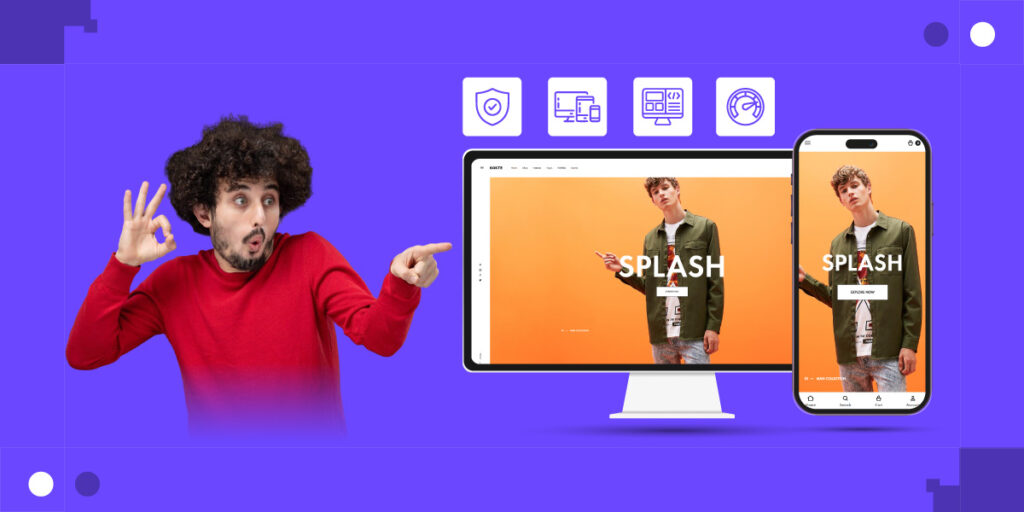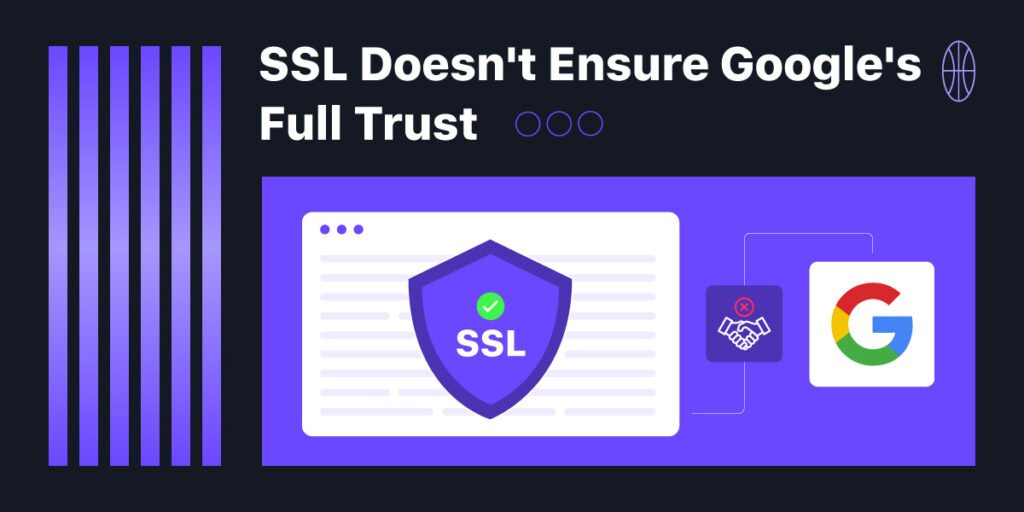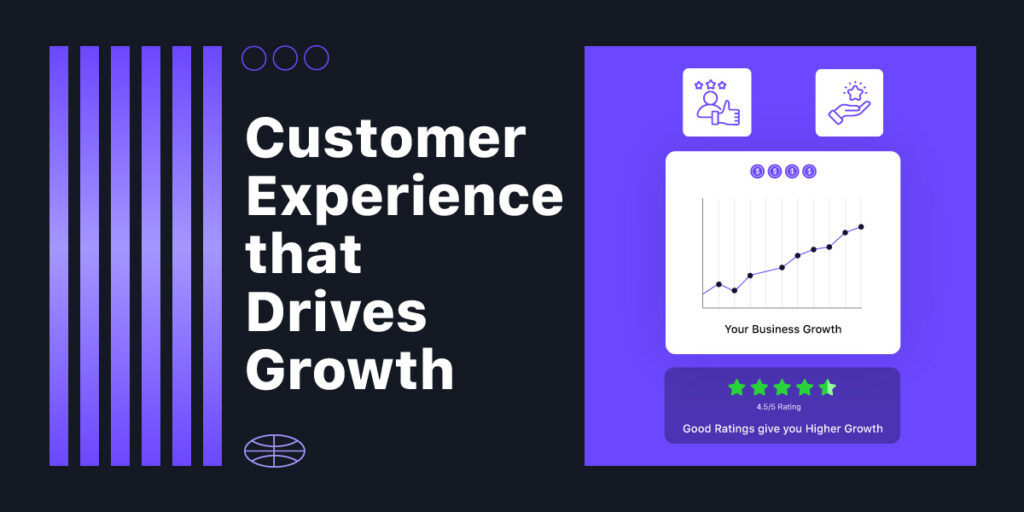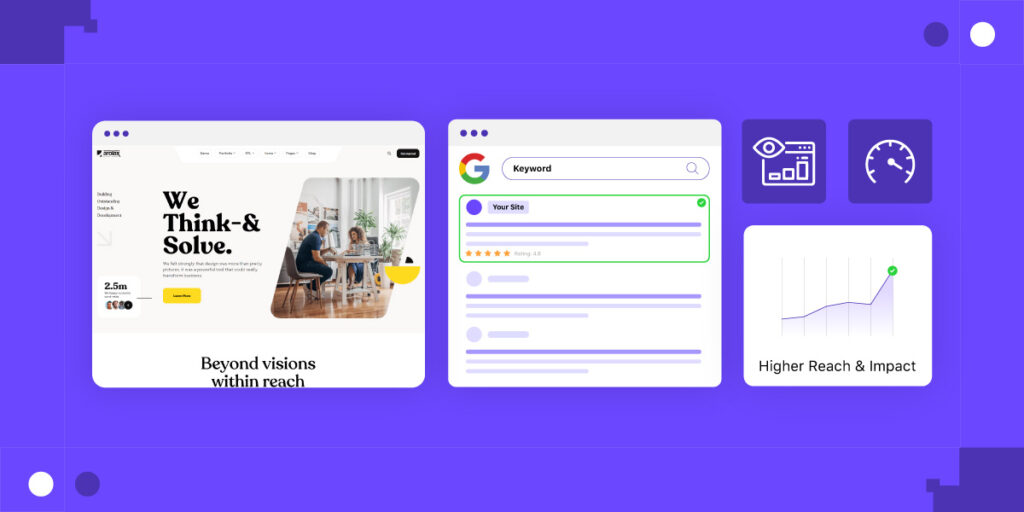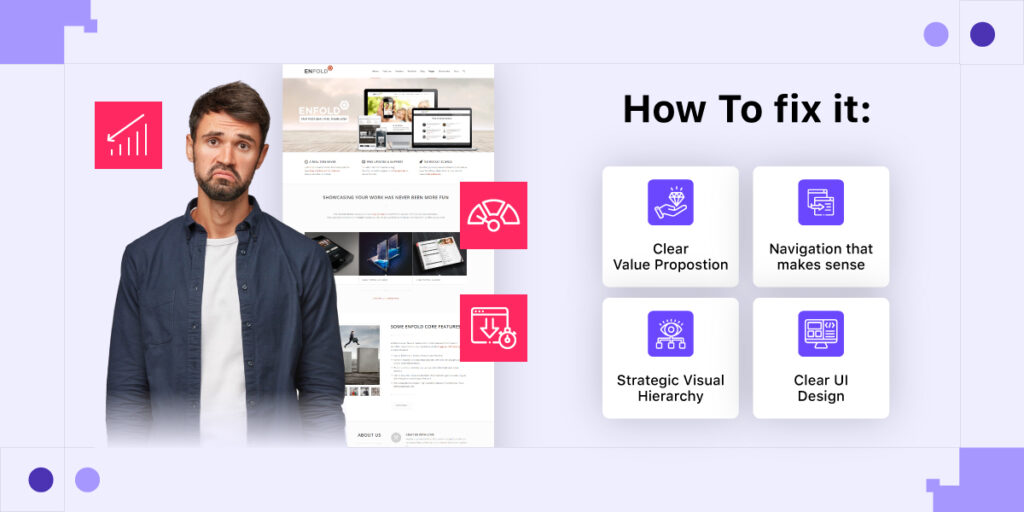In today’s fast-paced digital world, an outdated or unavailable website might turn off potential buyers before they even explore your products. A sleek, modern user interface increases trust and reduces the frustration users experience while exploring badly designed websites. With a responsive layout, your website will provide a seamless, constant exposure across all devices, removing obstacles that cost you clients and revenue.
The Harsh Truth: Users Judge Your Website in Seconds
Visitors create opinions about your site and your brand in seconds. If your design appears old or confused, people will leave before you have the opportunity to connect with them.
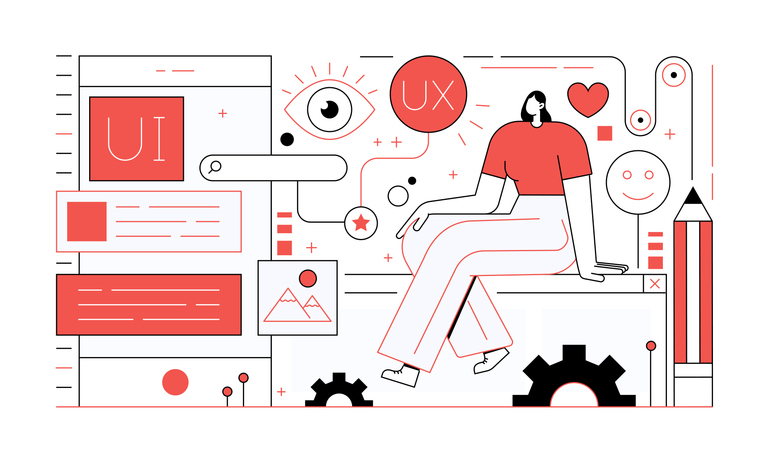
Why Visual Appeal is the First Deal breaker
You never get another chance to make a first impression. When a visitor clicks on your website, they are secretly judging your business. Does it appear modern? Is it easy to navigate? Does it seem credible? If your design fails to wow, consumers will leave, often without reading a single word. A clumsy layout or outmoded interface can erode trust before you even introduce your business.
How Cluttered Interfaces Drive Visitors Away Immediately
Is there too much going on? Your visitor has already gone. Overwhelming design with pop-ups, buttons, and flashing banners makes users feel puzzled. When customers can’t find what they’re seeking in seconds, they leave without digging deeper. Clean, focused design is more than simply aesthetically pleasing; it is also necessary for life.
The Hidden Cost of Sticking with an Old-School Website
An outdated website is more than just a little inconvenience; it’s a quiet profit killer. Businesses frequently misjudge how outdated design language impacts user confidence. A 2010 layout screams neglect, and this perception extends to your goods and services. Customers think that if your website does not transform, neither does your business.
Trust Signals: What Your Design Says About Your Business
Visitors make subconscious choices depending on color schemes, space, and alignment. Even if your product is of the highest quality, having an inaccurate or unskilled interface makes you appear untrustworthy. On the other hand, a polished, modern UI conveys professionalism, trust, and authenticity without saying anything.

Mobile Users Are Leaving—Here’s Why
With mobile usage surpassing desktop, having a non-responsive site is like locking out half your customers. If users need to pinch, zoom, or swipe excessively, they’re gone. A responsive layout ensures your site adapts to all screen sizes, providing a seamless experience that keeps visitors engaged.
Scrolling, Zooming, Frustrating: The Mobile UX Disaster
Have you ever visited a website where the buttons are too small to tap, the text is hardly readable, and the photos pour off the screen? This is what mobile users face regularly when visiting badly designed websites. And, guess what? They will not tolerate it. Poor mobile UX irritates users while also affecting your SEO and brand reputation.
A Modern UI Isn’t Just Trendy—It’s Strategic
Modern UI focuses on purposefully guiding the user’s path. The strategic positioning of buttons, font, and space ensures that visitors understand where to look and what to do. A good design does more than just look attractive; it gently nudges users toward conversion without forcing them to think.
Microinteractions That Create Macro Impact
Small details such as hover effects, animation transitions, and feedback messages improve the user experience. These micro interactions indicate that your website is active, living, and user-friendly. They increase psychological involvement and make your website easier to use, allowing people to stay longer and explore further.
Speed is the Silent Killer of Conversions
A slow website generates irritation, raises bounce rates, and ruins conversions. Even a current design won’t help you if your page loads like it’s from the early 2000s.
| Sr No. | Problematic Points | Impact on Business | User Expectation | Result |
| 1 | Slow Page Load Times | Frustrates visitors and creates a poor user experience | Load time under 3 seconds | Increased bounce rates |
| 2 | Sluggish Site Performance | Decreases customer trust and satisfaction | Fast, responsive interactions | Lower engagement and fewer conversions |
| 3 | Overloaded Design Elements | Drains performance despite modern visuals | Lightweight, optimized content | Users leave before the site finishes loading |
| 5 | Outdated Hosting/Infrastructure | Bottlenecks site speed, even with good UI | Reliable, high-performance setup | Leads lost to faster competitors |
Optimizing the layout for rapid performance
Your layout has an impact on performance in addition to its appearance. Bloated code, large pictures, and useless animations all contribute to a slower performance. A well-structured, responsive design makes use of optimized assets and simplified architecture to keep your site running smoothly, quickly, and efficiently.
Your Website is Your Digital Storefront—Make It Count
Think of your site as a digital introduction. Visitors will not click deeper if they do not feel confident. It must immediately express who you are, what you provide, and why users should care. Clear messaging, good images, and a strong structure are all must-haves.
Calls to Action That Convert
Your call-to-action (CTA) buttons represent the end point of your sales journey. However, imprecise terms such as “Click Here” do not elicit action. Modern UI design displays bold, straightforward CTAs where the eye naturally falls, utilizing convincing wording that encourages users to interact.
What a UI/UX Professional Brings to the Table
Sure, templates are inexpensive and quick, but they have restrictions. You risk incorporating with thousands of copycat sites, or worse, breaking layouts when you try to customize. Template websites frequently lack optimization, adaptability, and fail to reflect your distinct brand personality.
A professional designer does more than just make things seem attractive; they create an experience. They understand user behavior, design psychology, and commercial objectives. They design bespoke layouts that enhance your brand and optimize conversions, resulting in a site that performs rather than just exists.
The Most Overlooked Design Elements
An available website is not a “nice to have”; it is a need. From screen reader interaction to appropriate contrast ratios, inclusive design guarantees that all users can interact with your information. Ignoring availability not only turns off potential customers, but it can also lead to legal issues.
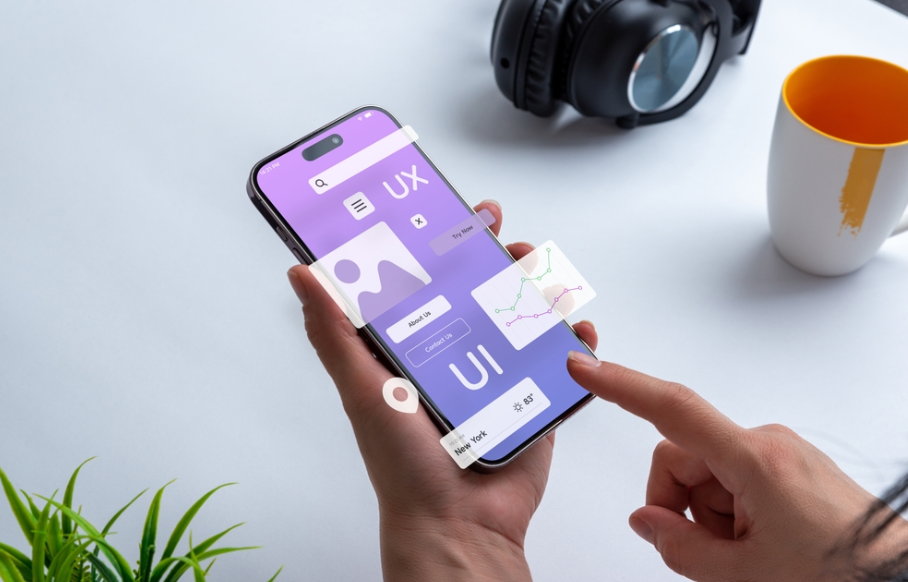
How Diversity in Design Can Expand Your Reach
Affordable design allows your site to reach a wider audience, including people with disabilities, older folks, and those using slower devices. It represents a brand that cherishes each customer, resulting in increased loyalty and favorable word-of-mouth. When everyone feels welcome, your business thrives.
Brand Consistency with Modern Design.
A broken visual identity confuses users and reduces brand memory. A modern UI matches your fonts, colors, icons, and tone across all pages, resulting in a consistent look that increases identification. Consistency is essential for building trust, which leads to conversions.
Color Psychology & Visual Branding That Stick
Colors trigger feelings. Blues convey trust, reds emphasize urgency, and greens indicate growth. Purple signifies richness, creativity, and expertise. In branding, it expresses premium quality and originality, making it excellent for companies that want to appear exclusive, imaginative, or visionary.
A smart UI design employs color psychology to steer user behavior and reinforce your brand’s message. When done correctly, your color scheme becomes an expression of your personality.
Conclusion:
Begin with a design audit. Determine what seems obsolete, what frustrates people, and what could be improved. Then, focus on mobile-first design, streamline navigation, and refresh your images. Concentrate on user flow—ensure that each click has a clear purpose and value.
Do not settle for fast fixes or generic templates. Collaborate with experts who understand your industry, audience, and objectives. A strategic UI/UX partner not only makes a site seem better; they also improve performance, increase conversions, and strengthen brand visibility.
